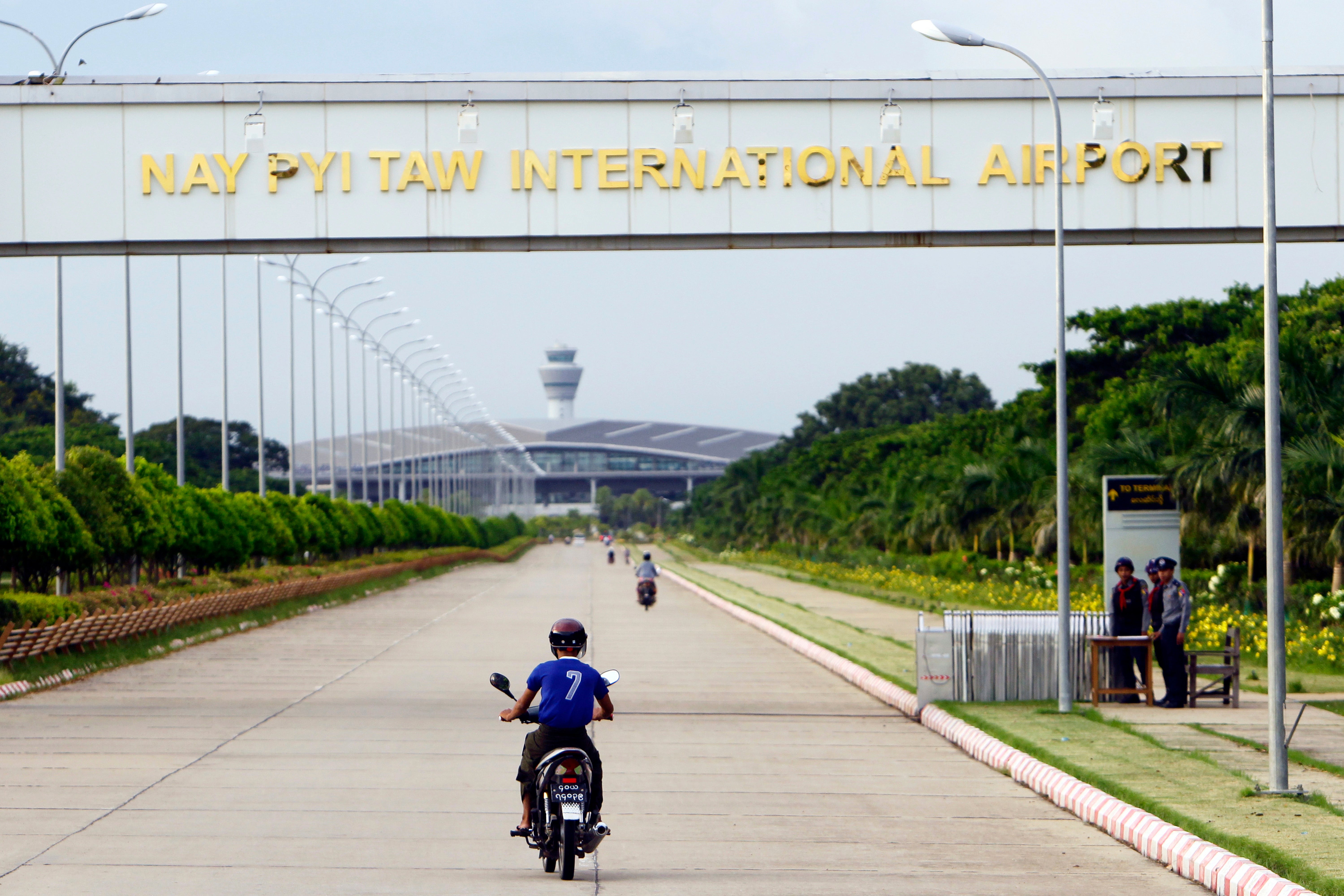Myanmar resistance group says its drones hit targets in the capital, but army says it shot them down
Myanmar’s main pro-democracy resistance group says its armed wing launched drone attacks on the airport and a military headquarters in the capital, Naypyitaw

Your support helps us to tell the story
From reproductive rights to climate change to Big Tech, The Independent is on the ground when the story is developing. Whether it's investigating the financials of Elon Musk's pro-Trump PAC or producing our latest documentary, 'The A Word', which shines a light on the American women fighting for reproductive rights, we know how important it is to parse out the facts from the messaging.
At such a critical moment in US history, we need reporters on the ground. Your donation allows us to keep sending journalists to speak to both sides of the story.
The Independent is trusted by Americans across the entire political spectrum. And unlike many other quality news outlets, we choose not to lock Americans out of our reporting and analysis with paywalls. We believe quality journalism should be available to everyone, paid for by those who can afford it.
Your support makes all the difference.Myanmar’s main pro-democracy resistance group said Thursday its armed wing launched drone attacks on the airport and a military headquarters in the capital, Naypyitaw, but the country’s ruling military said it destroyed or seized more than a dozen drones used in the attacks.
The opposition National Unity Government 's “Defense Ministry” said in a statement that special units of the People’s Defense Force used drones to attack the targets simultaneously. The group, known by the acronym NUG, calls itself the country’s legitimate government, while the People's Defense Force is made up of many local resistance groups with a good deal of independence.
Although there was no immediate evidence of any damage caused by the attack, the military's acknowledgement that it had taken place in one of the most heavily guarded locations in the country will be seen by many as the latest indication that it is losing the initiative to its determined opponents, a trend first evident late last year when it lost critical territory in the northeast and west.
The NUG said there were reports of casualties from the attacks, while the military said there weren't any.
State-television MRTV in its evening news broadcast said that 13 drones crashed more or less intact and two others exploded in mid-air. Photos on the broadcast showed what looked like wooden fixed-wing drones with a wingspan of over a meter (yard). It added that they were searching for others. The military initially had announced they had shot down seven.
BBC’s Burmese-language service and Khit Thit, an online news service sympathetic to the resistance, said the airport was shut down for a while after the attacks.
It wasn't possible to independently verify most details of the incident. People who live near the airport who were contacted by The Associated Press said they were unaware of any attack, and photos released by the government showed only what appeared to be crashed drones. There had been claims in September of an earlier attack on the airport in Naypyitaw, but it drew little attention.
Myanmar has been in turmoil since the military seized power from the elected civilian government of Aung San Suu Kyi in February 2021, triggering nationwide peaceful protests that were suppressed with deadly force by the security forces, leading to armed resistance that amounts to a civil war.
The airport compound, which includes both a military air base and a civilian airport, is about 25 kilometers (16 miles) southwest of the military headquarters that the resistance group said it attacked.
The resistance group that claimed responsibility for the attack, Kloud Team (Shar Htoo Waw ), specializes in drone warfare, which is frequently employed by People’s Defense Force units, which lack the army's heavy firepower.
Kloud Team said it had targeted the house of Senior Gen. Min Aung Hlaing, the head of the ruling military council, as well as the military headquarters and air base,
Despite its great advantage in armaments and manpower, the military has been unable to quell the resistance movement, and frequently carries out air strikes in disputed territory. Civilian targets are often hit, and about 2.4 million people have been displaced since the 2021 army takeover.
For the resistance forces, drones have become crucial weapons for fighting back. Initially, smaller drones with lighter payloads were used, but now the opposition groups are using more sophisticated systems to drop explosives on military targets. Resistance groups frequently post videos on social media of their drone attacks.
The People’s Defense Force and its local units have allied themselves with major ethnic guerrilla groups in border regions that have been carrying out armed struggles against the army for decades seeking greater autonomy.
Last October, a surprise offensive by an armed ethnic alliance captured towns and overran military bases and garrisons along the Chinese border. The operation by the Myanmar National Democratic Alliance Army, the Arakan Army and the Ta’ang National Liberation Army, who named themselves the Three Brotherhood Alliance, was such a stunning success that it buoyed others in the resistance and represented a turning point, though victory for the opposition is still not in sight, experts said.